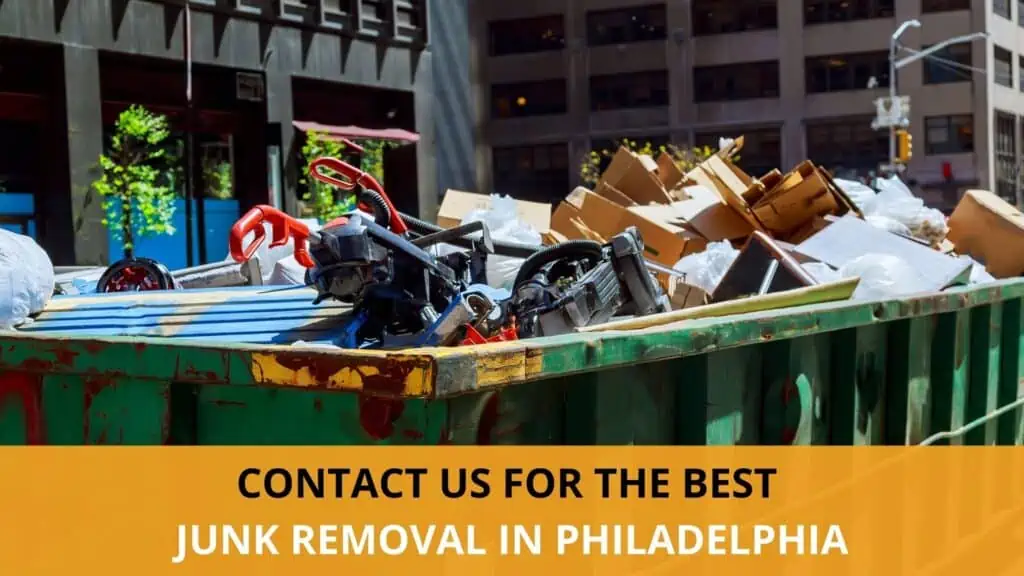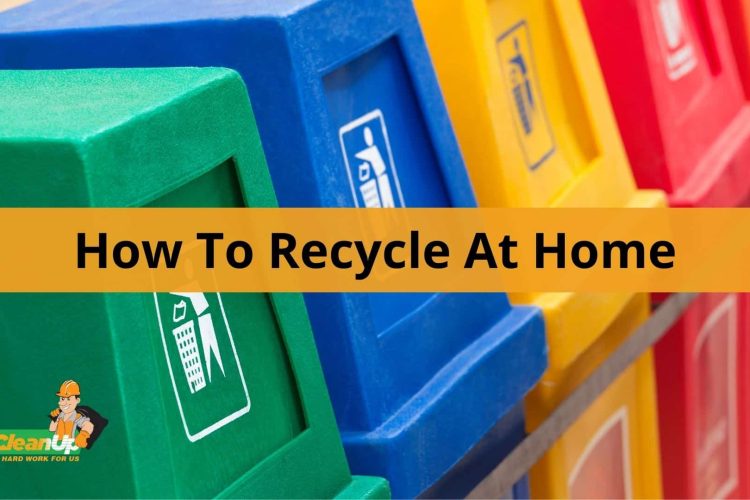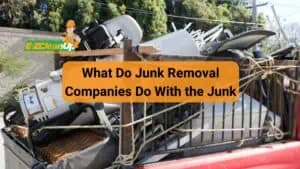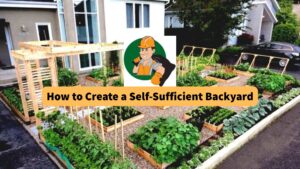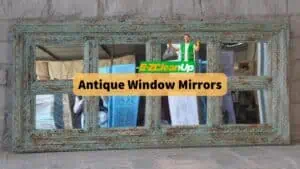Recycling at home is an essential practice that not only helps the environment but also contributes to a cleaner, greener lifestyle. With the increasing amount of waste generated every day, it has become crucial for individuals to adopt recycling habits and repurpose items that would otherwise end up in landfills.
This article will highlight easy and effective ways to recycle at home, offering practical guidelines to minimize waste and maximize resource conservation.
Why Recycling is so Important?
The benefits of recycling at home extend beyond environmental protection. By repurposing and recycling everyday items, individuals can save money and reduce their carbon footprint.
Furthermore, instilling eco-conscious habits within the household can inspire friends and family members to follow suit, leading to a collective effort towards sustainable living.
Recycling at home can make a significant impact on the reduction of waste and the preservation of valuable resources for future generations.
The Basics of Recycling
Recycling is the process of collecting, processing, and reusing materials that people would otherwise throw away. Common recyclable materials include paper and cardboard, plastic, glass, and aluminum.
Recycling programs often vary by locality, so it is essential to check with your local recycling center for specific guidelines.
Steps to recycle:
- Sort: Separate different recyclable materials, such as paper, plastic, glass, and metal.
- Clean: Rinse containers, such as jars or bottles, to remove food residue or other contaminants.
- Flatten: Collapse cardboard boxes and other bulky items to save space in recycling bins.
Recycling offers numerous environmental benefits, which include:
- Conserving resources: Recycling helps reduce the demand for raw materials, ensuring the conservation of valuable natural resources like trees, water, and minerals.
- Reducing waste: Reusing materials through recycling minimizes the amount of waste that goes into landfills, lowering the negative impact on our environment.
- Saving energy: Manufacturing new products from recycled materials typically requires less energy compared to the production of new materials. This helps reduce greenhouse gas emissions.
| Material | Environmental Benefit |
|---|---|
| Paper | Recycling one ton of paper saves 17 trees and 3 cubic yards of landfill space. |
| Plastic | Recycling one ton of plastic conserves approximately 3.8 barrels of petroleum. |
| Glass | Recycling glass reduces energy usage and lowers emissions from glass production. |
| Aluminum | Recycling aluminum saves 90% to 95% of the energy needed to produce new aluminum. |
By actively recycling at home, individuals can help make a positive impact on the environment and contribute to a more sustainable future.
Recycling Practice At Home
Setting Up Your Home Recycling Station
You can easily create a recycling station in your home by setting up separate bins for different waste materials. Use clearly labeled bins for common recyclables such as paper, glass, plastic, and metal. Place these bins in an accessible area, preferably near the kitchen, laundry room, or garage, so that every household member can easily sort their waste. It’s also helpful to have a list of acceptable recyclable materials attached to each bin to ensure correct sorting.
Proper Separation of Recyclables
Proper separation of recyclables is crucial in ensuring a smooth recycling process. Below is a quick guide on how to sort common household waste materials:
- Paper: Newspapers, magazines, office paper, junk mail, and cardboard (flatten boxes for easier storage).
- Glass: Glass bottles and jars (rinse containers to remove residue).
- Plastic: Plastic bottles, containers, and jugs (remove caps and rinse containers).
- Metal: Aluminum cans, steel cans, and tin cans (rinse cans to remove residue).
Please note that recycling guidelines may vary depending on your local recycling facility. Always follow the guidelines provided by your local authorities.
Composting Organic Waste
Composting is an excellent way to recycle organic waste, such as food scraps and yard debris, turning them into valuable nutrient-rich soil amendments for your plants and garden.
To start composting at home, you can use a simple compost bin or tumbler in your garden, or even an indoor worm composting system if you don’t have outdoor space. Here is a list of common composting materials:
- Greens: Vegetable and fruit scraps, coffee grounds, tea bags, fresh grass clippings, and plant trimmings.
- Browns: Dry leaves, small branches, twigs, straw, sawdust, and shredded cardboard or paper.
To maintain a healthy compost pile, alternate layers of greens and browns, and turn the compost regularly to aerate the mixture and promote decomposition.
By incorporating these recycling practices into your daily routine, you can significantly reduce the amount of waste your household generates and make a positive impact on the environment.
Creative DIY Recycling Projects
Transforming discarded items into beautiful crafts not only reduces waste, but also provides a fulfilling creative outlet. Some popular materials suitable for recycling crafts include:
- Pallet wood: With some sanding and refinishing, reclaimed pallet wood can be used as wall décor, furniture, or shelving.
- Mason jars: Repurpose mason jars into home accessories like decorative vases, candle holders, or storage containers.
- Plastic bottles: By cutting and shaping plastic bottles, they can become practical containers, planters, or even art pieces.
Upcycling Everyday Objects
Aside from crafting dedicated pieces, upcycling everyday objects provides an opportunity to give old items new life. Here are a few ideas to get started:
- Cardboard: Transform cardboard boxes into organizers, playsets for children, or even furniture with reinforced layers.
- Old furniture: Refurbish worn out pieces by sanding, repainting, or reupholstering. Alternatively, repurpose furniture items into something different like turning a dresser into a bookshelf.
- Tin cans: Clean metal cans can become stylish pencil holders, hanging planters, or utensil organizers with slight modification and decoration.
By repurposing these common household items, individuals can reduce waste, save money, and apply their creativity in an environmentally friendly manner.
Community Involvement and Education
While individual efforts are important, the combined efforts of a community can significantly amplify the effectiveness of recycling initiatives. Here’s what you can do:
Participate in Local Recycling Programs
Becoming involved in your community’s recycling initiatives is an excellent way to promote and support recycling at home. Local recycling programs often provide information on the types of materials accepted, proper sorting methods, and collection schedules.
Joining these programs not only helps reduce waste, but also fosters a sense of responsibility and shared goals among community members. Some communities may offer curbside recycling, drop-off centers, or compost sites for easy access and convenience.
By taking part in these programs, you contribute to a cleaner, more sustainable environment.
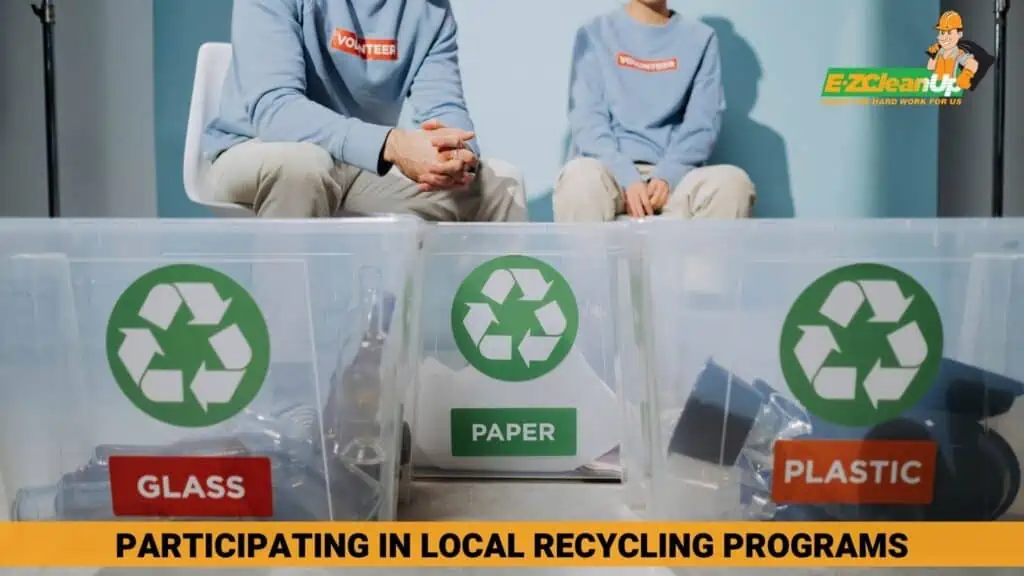
Educating Family and Friends on Recycling
Sharing your knowledge about recycling with family and friends is crucial to promote recycling practices at home. Start by discussing the reduce, reuse, and recycle concept and its importance in environmental conservation.
You can also share tips on identifying recyclable materials and proper disposal practices.
For instance, consider creating a materials list that can be easily referred to, like the one below:
| Material | Recyclable | Notes |
| Cardboard | Yes | Flatten and remove any tape, staples, or labels |
| Glass | Yes | Rinse and separate by color |
| Paper | Yes | Remove any plastic or metals |
| Plastic | Depends | Check for recycling symbol and local rules |
| Metal | Yes | Empty and rinse cans |
Additionally, engage in conversations about the benefits of recycling, such as energy conservation, natural resource preservation, and reduction of greenhouse gases.
Recycle At Home Today!
Recycling at home is a simple yet powerful way to protect our environment. By adopting these easy steps, we can significantly reduce waste and conserve natural resources.
Every effort counts, and together, our actions can lead to a more sustainable and healthier planet.
Let’s continue to recycle and inspire others to do the same, shaping a greener future for all.
If you’re dealing with a lot of clutter and junk in your home, contact us for junk removal services that go the extra mile!
